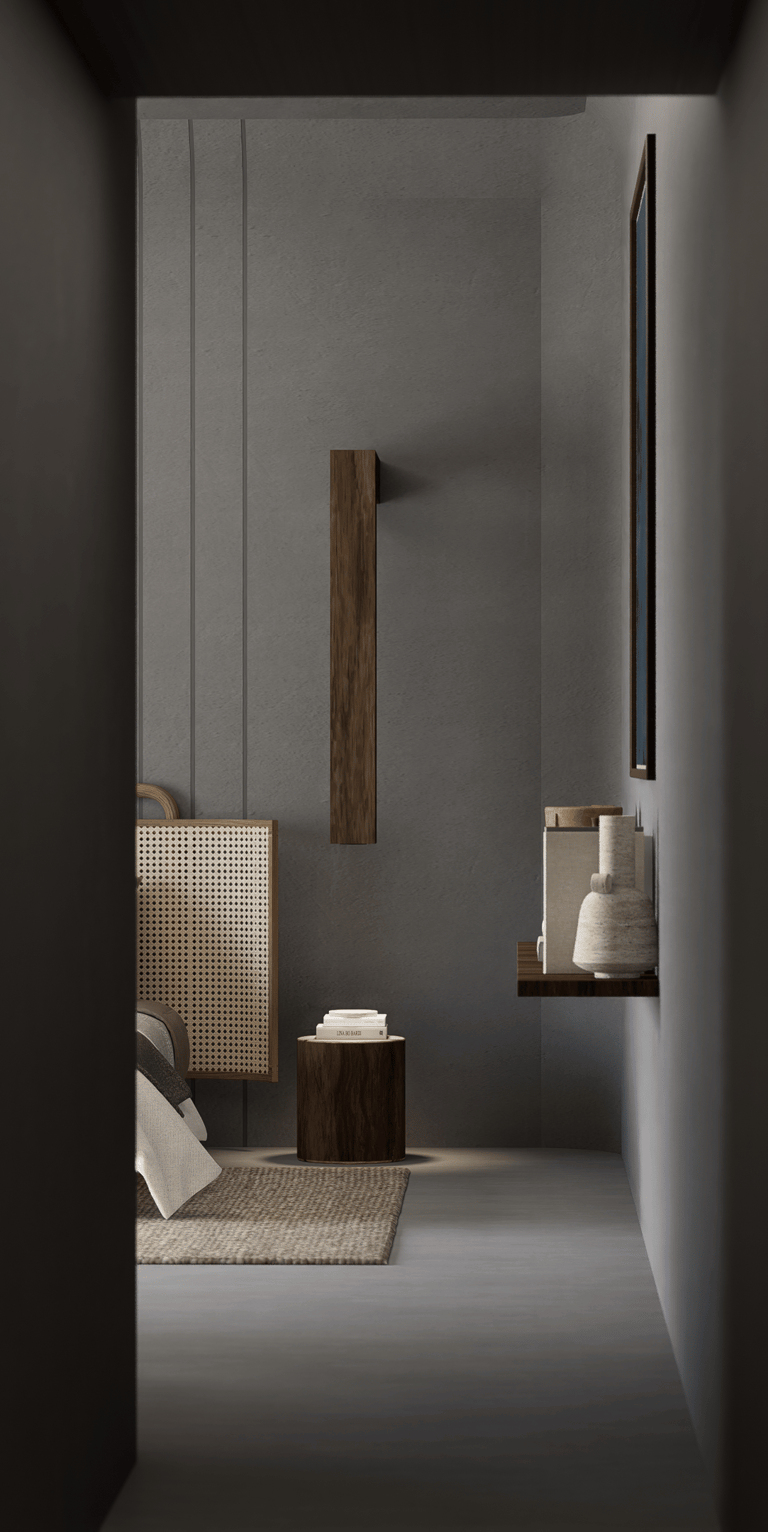Design Principles for Luxury Multigenerational Homes
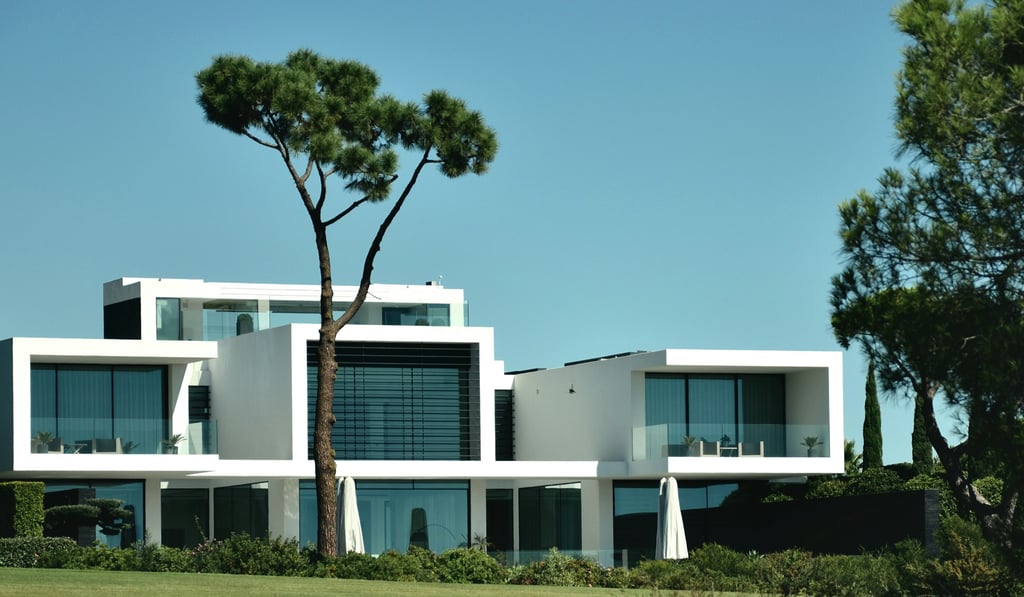

Introduction
The private estate is more than just a residence ; it is an inheritance in motion. These villas are expected to outlast design fashions and even outlive individual generations. Increasingly, architecture is not only about beauty or comfort but about adaptability: the ability of an estate to serve a growing, shifting household while maintaining dignity, privacy, and elegance.
A well-composed multigenerational home rests on three pillars: zoning, adaptability, and invisible infrastructure. When executed correctly, these principles ensure that an estate feels both timeless and effortless, capable of holding family life in all its complexity.
The Architecture of Continuity
Research on multigenerational living shows that families thrive when design balances togetherness and separation. The estate must hold both intimacy and distance in equal measure.
Families want to remain close, yet not compressed. In practice, this means planning estates with distinct zones — elders’ quarters designed with accessibility in mind, suites for adult children that can operate semi-independently, and transitional spaces where the family naturally converges.
Transitional spaces act as social “connective tissue” in a villa. Think broad corridors that double as gallery walls, intermediate lounges that encourage spontaneous interaction, or small breakfast nooks positioned between private suites and family zones. These are intentionally sized and furnished to invite presence without forcing it — a place where a morning greeting, a shared coffee, or a brief conversation can occur naturally. Strategic placement ensures that these areas connect private and public zones fluidly, allowing elders, adult children, and younger family members to circulate freely while maintaining autonomy and privacy.
Zoning is the first layer of design choreography:
Public spaces: Formal majlis, dining salons, and reception halls — ceremonial thresholds that signal identity and hospitality.
Family zones: Lounges, family kitchens, and playrooms — everyday life shielded from formal circulation.
Private suites: Independent living quarters for each generation, complete with private lounges, kitchenettes, and terraces.
Elders’ quarters: Level flooring, widened corridors, integrated handrails (concealed in millwork), non-slip finishes, and direct access to gardens and family rooms.
Service zones: Staff circulation, logistics hubs, and kitchens designed for invisibility yet total efficiency.
Pro insight: Circulation is the true architecture of continuity. Corridors act as buffers, wardrobes double as acoustic partitions, and “connective tissue” spaces — galleries, transitional lounges, breakfast nooks — enable casual encounters without forcing them.




Climate, Culture, and Inheritance
In most societies, the question of multigenerational living is also cultural. Families expect hospitality to remain central . Dining spaces, living rooms, and outdoor courtyards must scale elegantly to accommodate gatherings that mark both private milestones and public identity. At the same time, climate resilience matters: shaded circulation, energy-efficient envelopes, and discreet integration of technology ensure that future generations inherit not just a home, but a sustainable legacy.
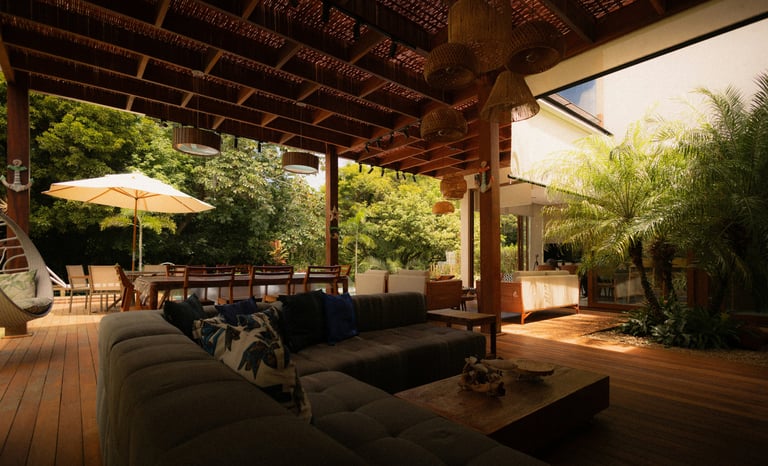

Outdoor Spaces: Seasonal and Multi-Generational Design
In a family estate, gardens, terraces, and pools are not merely scenic—they are extensions of daily life designed to accommodate every generation.
Flexible courts and lawns: Shaded play areas for children can transform seamlessly into event spaces for entertaining, yoga, or family gatherings. Consider retractable shade sails or pergolas that can define zones as needed.
Pools for all ages: Design separate zones—shallow play areas for kids, lounge edges for adults, and lap lanes for exercise. Integrated steps, gradual slopes, and safety barriers ensure both accessibility and independence for elders and children alike.
Outdoor kitchens and tea stations: Position food prep or beverage stations adjacent to terraces and seating clusters to encourage spontaneous use. Concealed storage and weather-resistant finishes keep these spaces elegant and practical.
Microclimate management: Layered shade—from pergolas, retractable awnings, and trees—combined with strategically placed planting and wind baffles, creates comfortable zones year-round. Consider thermal materials underfoot and misting or evaporative features where appropriate.
Circulation and privacy: Pathways, seating pockets, and subtle screening allow family members to move freely without disruption. Plan sightlines so elders, children, and guests each have comfortable access while maintaining privacy.
Sensory & Comfort Anchors
Incorporate fragrant planting (rosemary, jasmine, citrus) for seasonal cues.
Use sound, water features, and texture to define each outdoor room subtly.
Provide lighting layers—ambient, task, accent—for night use while preserving views of the sky.
Pro tip: Treat outdoor areas as daily living rooms but they should be choreographed for climate, comfort, and privacy, not just visual appeal. Every surface, shade, and seating choice should encourage presence and interaction across generations.
Operations & Infrastructure: Future-Proofing Your Estate
A multi-generational home relies on mechanical, electrical, and digital systems that support life seamlessly:
HVAC, water, and power are zoned by use patterns, keeping comfort personalized and energy efficient.
Redundancy and backup systems are discreetly integrated to handle unexpected events without disruption.
Conduits, risers, and service corridors are pre-planned for future upgrades, ensuring evolution never looks like patchwork.
Luxury today is measured not in finishes but in how a space makes you feel.
Circadian lighting systems: The circadian rhythm is the body’s natural 24-hour internal clock that controls sleep, energy, and many bodily functions based on the cycle of light and darkness. Proper lighting tuned to mimic this natural daylight cycle helps regulate these rhythms, improving energy during the day and promoting restful sleep at night. In practice, a circadian lighting system adjusts brightness and color temperature throughout the day to align with natural light patterns, supporting well-being and productivity.
Haptic feedback: This refers to the deliberate use of tactile materials such as warm woods, cool stone, and soft leathers in a home’s design. The different textures and temperatures engage touch and memory, influencing mood positively as residents move through spaces. This orchestration creates a comforting, physically connected experience that enriches emotional well-being.
Biophilic integration: Incorporating natural elements like green walls connected to HVAC systems that purify air, plus courtyards and water features that regulate humidity, brings nature indoors. These features serve as sensory anchors—focal points that create calm, reduce stress, and improve overall mental health by reconnecting occupants with natural rhythms and elements.
Together, these design strategies transform the estate into a neurological sanctuary which is as attuned to psychology as it is to aesthetics.
Security
The comfort of a family depends on a sense of quiet confidence. Security in a multigenerational estate is not announced but absorbed into its fabric: layered approaches to the home, controlled vistas, private entries, and a rhythm of thresholds that make intrusion improbable without ever making protection visible. Discretion is the ultimate technology here — systems that monitor silently, architecture that conceals rather than exposes, allowing safety to feel effortless, unspoken, and dignified.
Staff Dignity: Designing Service That Disappears
In a multi-generational estate, the smooth functioning of the household depends on staff who are always present, yet never obtrusive. This begins with circulation: private entrances, hidden staircases, and discreet corridors allow staff to move efficiently, handling deliveries, waste, or daily tasks without crossing paths with family zones. Mechanical rooms, utility hubs, and storage areas are designed for ease of access and maintenance, not visibility—an invisible architecture of service.
Accommodation for staff should be considered with the same care as any other living space. Natural light, cross-ventilation, and thoughtful separation from family areas ensure that staff rest, prepare, and regroup in comfort. Bedrooms, bathrooms, and lounges sized for real use—not show—promote wellbeing, so that staff are alert, professional, and valued. Acoustic design ensures privacy in both directions: family life is uninterrupted, and staff quarters remain a retreat.
Service areas—kitchens, pantries, laundry, and workshops—are orchestrated for efficiency. Storage is organized according to daily workflow; appliances and fixtures are positioned for speed and ergonomics; circulation paths minimize wasted steps. This is luxury at its quietest: everything is in place, everything works, and nothing distracts from the family experience.
The result is an estate where service flows naturally. Meals arrive without ceremony, laundry is handled without interruption, and operations are invisible yet impeccable. Staff dignity is not a concession; it is the foundation of effortless, graceful living, turning the logistics of a multi-generational household into an art form.
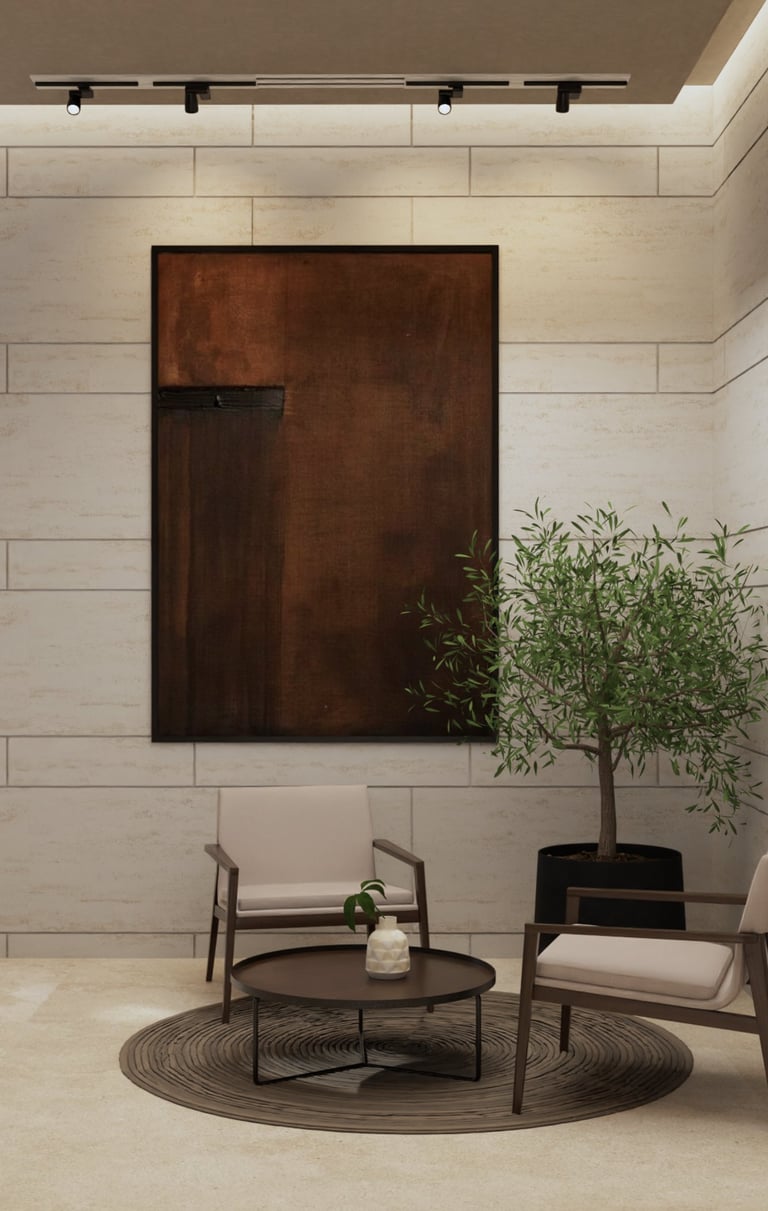

Neuro-Architecture and the Psychology of Space


Sustainability as Legacy
For multigenerational homes, sustainability is not only an ethical imperative but also a gesture of foresight. A sustainable estate is one that protects both the environment and the inheritance.
Circular Design Principles: Select materials not only for their aesthetic value but for their entire lifecycle. Prioritize cradle-to-cradle certified, recyclable, or reclaimable materials that ensure longevity and responsible reuse.
Resource Independence: Incorporate systems such as greywater recycling to irrigate gardens and maintain pools sustainably. Integrate smart grids that enable energy storage, efficient consumption, and potential resale of excess power.
Climate Resilience: Employ design strategies that minimize energy consumption, including thermal bridging prevention, dynamic shading, and passive cooling systems to reduce dependence on mechanical air conditioning, particularly important for climates experiencing extreme conditions.
Here, sustainability becomes synonymous with refined sophistication and thoughtful stewardship.
Heritage & Identity
Heritage in luxury multigenerational homes should be a living language, not merely decorative nostalgia. The estate must harmonize with local cultural motifs, materials, and proportions interpreted thoughtfully rather than imitated.
In Gulf contexts, elements like majlis spaces (formal reception areas) and mashrabiya screens (intricately carved wooden latticework) serve not only functional but social and cultural roles, offering privacy, shade, and community connection.
Across other regions, analogous vernacular features such as enclosed courtyards, stone colonnades, or crafted woodwork can be reimagined as active, modern design elements that honour identity while supporting contemporary lifestyle needs.
Evolving with Grace
Homes intended for multiple generations must be built for time as much as for people. Durability of structure and flexibility of plan ensure that what feels appropriate today will not feel obsolete tomorrow. True legacy design is not fixed; it adapts to new rituals, new technologies, and new expectations without eroding its essence. In this sense, the estate is less a monument than a framework for continuity.
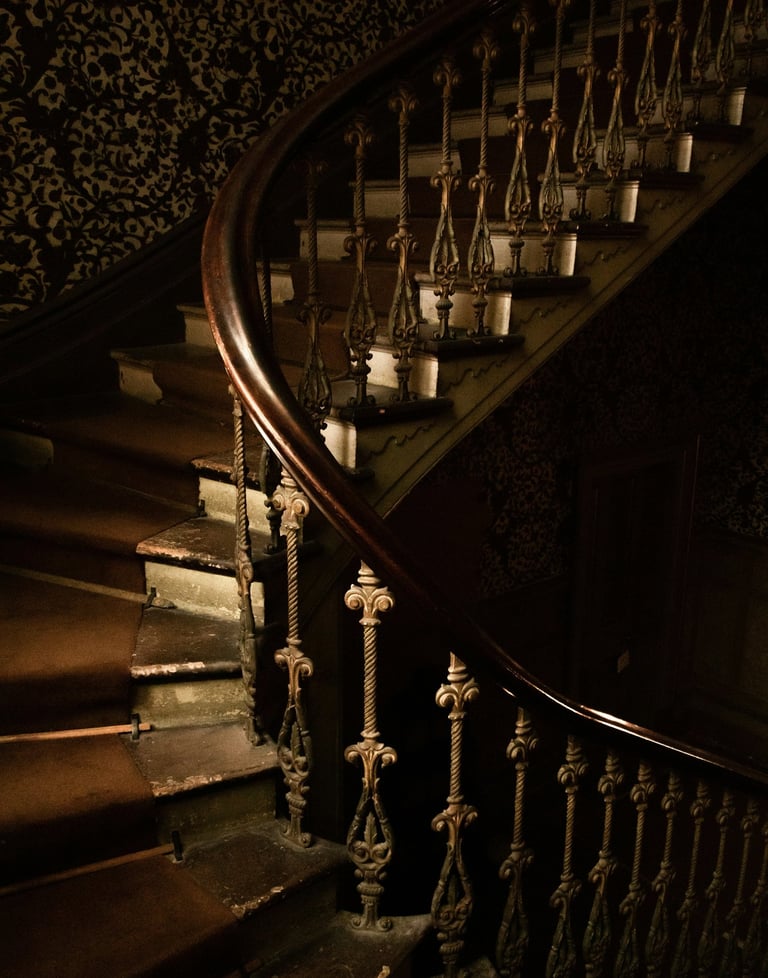

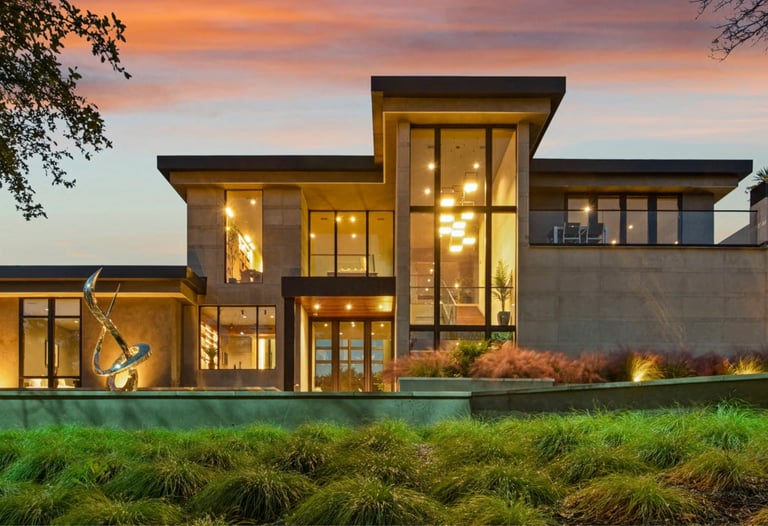

Smart Technologies & Cutting-Edge Enhancements
The most advanced technologies within a multigenerational estate should feel invisible. AI-driven environmental control can adjust lighting, temperature, and acoustics to each family member’s preference without intervention. Biometric access, when framed as comfort zoning rather than restriction, personalizes privacy without rigidity. RFID systems in kitchens and wardrobes anticipate needs before they are spoken; adaptive glass filters daylight across the day, shifting from brilliance to intimacy with no gesture required. Even acoustics can be tuned room by room, ensuring conversation carries in a majlis yet dissolves into silence in a bedroom.
Technology here is not a display of novelty but of refinement. The home itself seems attentive, responsive, almost anticipatory — enhancing comfort and discretion without ever intruding on atmosphere. The estate becomes not a showcase of devices, but an environment where innovation withdraws into the background, leaving only ease.
Closing Thought
An estate designed for multiple generations is more than walls and roofs: it is a living framework. Circulation, light, and materiality choreograph family life across decades; invisible systems anticipate needs before they are voiced; spaces balance intimacy and togetherness with effortless grace. Here, heritage, innovation, and comfort converge — the home itself becomes a silent guardian of memory, wellbeing, and legacy, preparing each generation not only to live, but to flourish.

